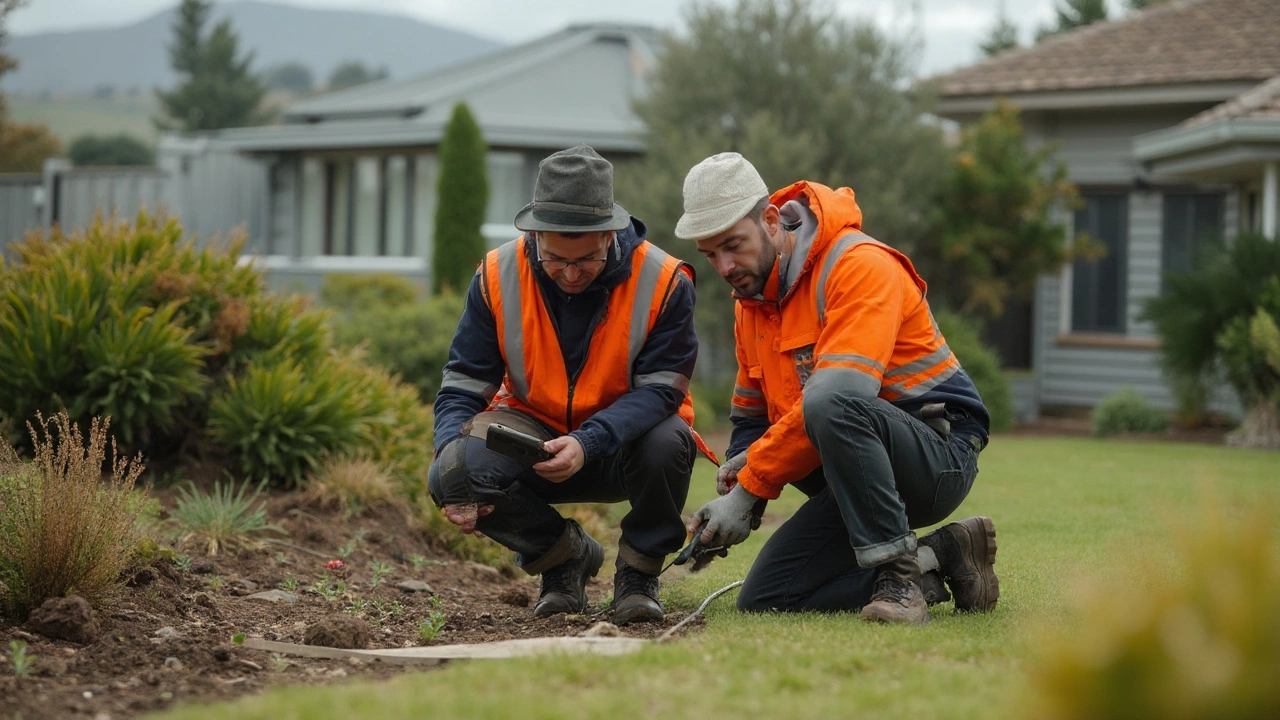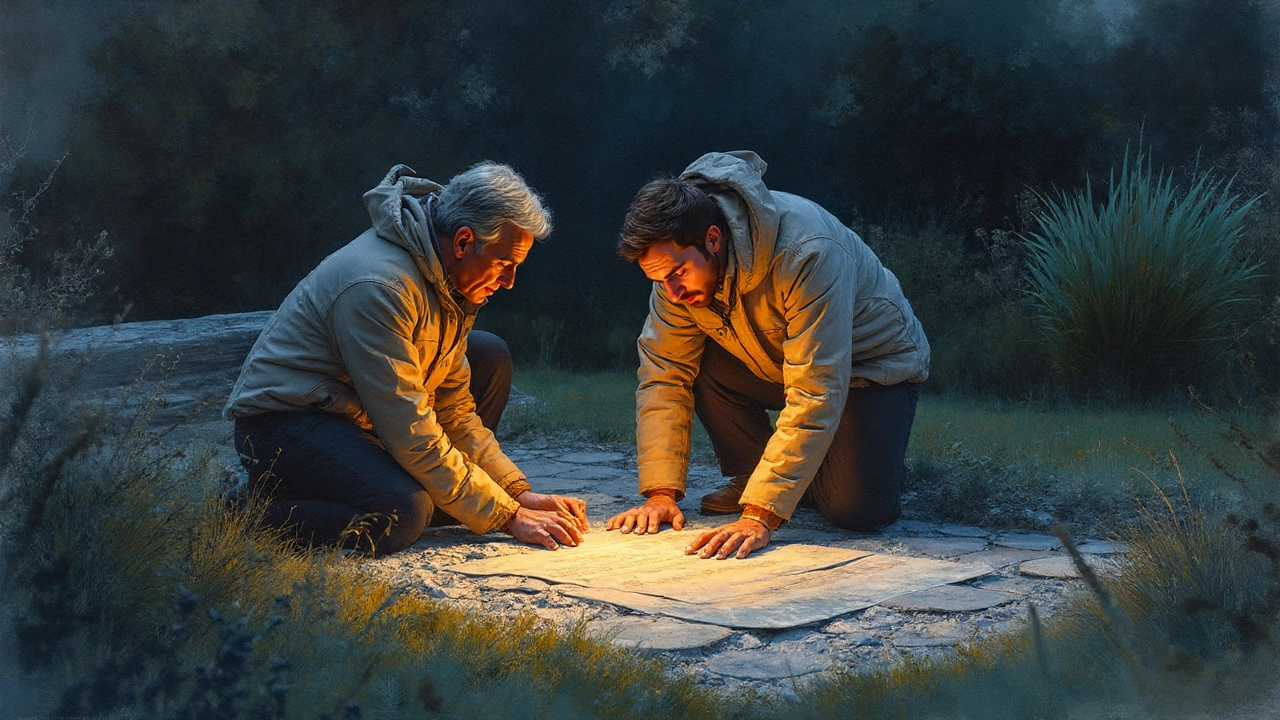TL;DR
- Use this core formula: Total = Design + Consents + Site Prep + Hardscape + Softscape + Systems (irrigation/lighting) + Waste/Transport + Overheads/Profit + Contingency + GST.
- Quick rule of thumb (ex-GST): Softscape $120-$300/m²; Hardscape $300-$900/m²; Premium builds $900-$1,800+/m².
- Add 10-15% waste on materials, 10-20% contingency for unknowns, and 15% GST on top in NZ.
- Biggest swing factors: access, excavation volume, soil disposal, retaining, drainage, and site slope.
- Run a line-item takeoff: measure, quantify, apply unit rates, and sanity-check against m² benchmarks.
Landscaping costs are the total expenses to plan, build, and plant an outdoor space, including design, consents, site preparation, hardscaping, softscaping, systems (like irrigation and lighting), waste handling, overheads, contingency, and GST. In New Zealand (2025), typical ranges run from NZ$120-$300/m² for softscape-heavy projects to NZ$900-$1,800+/m² for premium hardscape builds, depending on access, slope, and material choices.
What you’re actually estimating
You don’t price a garden; you price a bundle of trades, materials, and risks. That’s why two similar-looking yards can be tens of thousands apart. The quick mental model is simple: every item in the plan has a quantity, a unit rate, and a complexity factor. Your job is to make each explicit so nothing sneaks in later as a “variation.”
Hardscaping is the structural part of a landscape-paving, concrete, decks, walls-that delivers function and shape but tends to be the cost driver. By contrast, Softscaping covers living layers-soil, plants, turf, mulch-that add color, cooling, and biodiversity, usually at lower unit rates but with ongoing maintenance.
The core formula (and how to use it)
Use this structure as your worksheet:
- Design and documentation
- Consents and approvals
- Site preparation and access
- Hardscape (paving, concrete, decks, walls)
- Softscape (soil, plants, lawns, mulch)
- Systems (irrigation, lighting, drainage)
- Waste/transport and equipment
- Overheads and margin
- Contingency
- GST (15% in NZ)
In equation form (ex-GST first):
Total ex-GST = Σ(line items) + Overheads/Margin + Contingency. Total inc-GST = Total ex-GST × 1.15
Where each line item = Quantity × Unit Rate × Complexity Factor.
Step-by-step: calculate your landscape budget
- Measure the site (m² for surfaces, m for edges, m³ for bulk materials). Use a tape, plan, or phone lidar. Sketch zones: patio, path, lawn, garden beds, walls.
- Count the components. Pavers in m², concrete in m³, decking in m², timber length in m, plants by pot size and quantity, soil in m³, edging in m.
- Pick unit rates that match your city and finish level. Cross-check with a current cost guide like BRANZ 2024/25 or recent supplier quotes.
- Factor complexity. Tight access adds time. Slope triggers retaining or steps. Heavy clay needs drainage. Coastal winds change plant selection and staking.
- Add equipment and cartage. Excavator, plate compactor, tip fees, delivery, cranage if needed.
- Include design, consents, and compliance. Deck height, fence height, and retaining wall rules bite if ignored.
- Layer in overheads and margin if you’re comparing to contractor quotes (10-25% is common). DIY can remove margin but not time, tools, or tip fees.
- Add contingency (10-20%) for rock, buried rubbish, weather delays, or last-minute changes.
- Apply GST at 15% on the final ex-GST total.
NZ unit rates you can actually use (2025)
Numbers below are typical supply-and-install ranges in New Zealand, ex-GST, for urban sites with reasonable access. Confirm locally-Auckland and Queenstown often sit at the high end; smaller towns skew lower. Source sanity checks: BRANZ cost guides, Stats NZ CPI, supplier price lists from 2024-2025.
- Pavers concrete or stone units laid on a compacted base: $180-$350/m² (standard concrete paver) to $350-$600/m² (stone). Includes base, sand, laying, cuts, and compaction.
- Poured concrete on compacted base with mesh: $200-$380/m² (broom finish), $350-$600/m² (exposed aggregate), $500-$800/m² (colored/polished external where suitable).
- Decking timber or composite platforms on joists and piles: $350-$700/m² (radiata pine), $650-$1,000/m² (hardwood), $700-$1,200/m² (composite), assuming low height and simple framing.
- Retaining wall a structure to hold back soil: $450-$1,200/m² of wall face (timber pole), $800-$1,600/m² (engineered or modular block), excluding design fees if engineering is required.
- Turf (instant lawn) rolled grass installed over prepared soil: $35-$60/m² including soil preparation and laying; Hydroseed sprayed grass seed slurry for large areas: $10-$20/m² (plus prep and watering).
- Topsoil screened fertile soil for planting: $60-$120/m³ supply; installed $120-$220/m³ depending on barrow distance.
- Mulch organic cover that suppresses weeds and retains moisture: $50-$100/m³ supply; installed $90-$180/m³.
- Irrigation system automated watering using dripline and pop-ups: $20-$40/m² for typical lawn and garden zones; small courtyards may price by zone ($900-$1,800/zone).
- Garden lighting low-voltage or solar fixtures for paths, trees, and features: $150-$350 per fitting installed (excludes long cable runs and switchboard work).
- Labour: General landscape crew $65-$95/hr; stonemason $90-$140/hr; excavator with operator $130-$180/hr plus delivery; tip fees $30-$80/m³ depending on waste type.
Don’t forget the tax. Goods and Services Tax (GST) is New Zealand’s value-added tax of 15% applied to most goods and services, including landscaping. Always add GST to compare apples with apples when reading quotes.
Comparison: paving vs concrete vs gravel vs decking
| Surface | Typical cost/m² | Lifespan | Maintenance | Drainage | Notes |
|---|---|---|---|---|---|
| Pavers | $180-$600 | 20-40 yrs | Weed control, re-sand | Permeable options available | Great for repairability and patterns |
| Poured concrete | $200-$800 | 25-40 yrs | Sealing every 3-5 yrs | Low (needs drainage design) | Clean look; joints can crack if base is poor |
| Gravel | $90-$180 | 10-20 yrs | Raking/top-up | High permeability | Budget-friendly; tricky for wheelchairs/strollers |
| Decking (pine) | $350-$700 | 15-25 yrs | Stain/oil 1-3 yrs | Raised-water flows under | Best on sloped sites; consents if high |
Worked example: 50 m² courtyard in Wellington
Scenario: Small, windy, slightly sloped site. Access is via a side path (barrow access). Scope includes 25 m² pavers, 10 m² deck (low), 10 m² garden beds, 5 m² lawn patch, basic irrigation, and 6 path lights.
- Site prep: 10 m³ cut and remove mixed soil at $70/m³ = $700; Excavator + operator 1 day $600; Delivery/float $200; Subtotal $1,500
- Paving 25 m² @ $300/m² = $7,500
- Deck 10 m² pine @ $550/m² = $5,500
- Garden beds 10 m²: Topsoil 2 m³ @ $180/m³ installed = $360; Mulch 1.5 m³ @ $120/m³ installed = $180; Plants 25 x 1.9L at $14 = $350; 4 small trees (45L) @ $180 = $720; Planting labour $400; Subtotal $2,010
- Lawn patch 5 m² instant turf @ $50/m² = $250
- Irrigation: 2 zones drip/sprinkler small site = $1,400
- Lighting: 6 fittings @ $220 = $1,320
- Waste allowance and sundries (sand, cement, fixings): $900
Subtotal ex-GST = $1,500 + $7,500 + $5,500 + $2,010 + $250 + $1,400 + $1,320 + $900 = $20,380
Overheads and margin (12%) = $2,446. Contingency (10%) = $2,038. Total ex-GST = $24,864. Total inc-GST (×1.15) = $28,594.
Sense-check: 50 m² site, mostly hardscape. $24,864 ex-GST ÷ 50 = ~$497/m². That sits neatly in the “mixed hard/soft” band. If access was terrible (steep steps) or a crane was needed, add $1,000-$3,000 quickly.
Worked example: new-build 200 m² section
Scope: 60 m² concrete patio (broom finish), 40 m² paths (pavers), 60 m² lawn, 40 m² planting, basic front fence, letterbox, irrigation to all gardens, LED path lights, and a small 0.8 m high retaining wall (10 m long).
- Site prep and levels: 30 m³ import topsoil @ $180/m³ installed = $5,400; 15 m³ remove spoil @ $70/m³ = $1,050; Compaction and base prep $1,200; Subtotal $7,650
- Concrete patio 60 m² @ $260/m² = $15,600
- Paver paths 40 m² @ $280/m² = $11,200
- Lawn 60 m² instant turf @ $45/m² = $2,700
- Planting 40 m² mixed: plants $2,400; soil amendments $500; mulch $600; planting labour $800; Subtotal $4,300
- Retaining wall 10 m × 0.8 m: face area 8 m² @ $650/m² = $5,200
- Front fence (timber) 12 m @ $180/m = $2,160
- Irrigation (lawns + beds) ~ 5 zones @ $1,200/zone average = $6,000
- Lighting 10 fittings @ $200 = $2,000
- Sundries, deliveries, and tip fees: $1,200
Subtotal ex-GST = $57,010. Overheads/margin (15%) = $8,552. Contingency (12%) = $7,441. Total ex-GST = $73,003. Total inc-GST = ~$83,953.
Per m² across full 200 m² = ~$365/m² ex-GST, which is right for a balanced plan with modest complexity.
Consents, rules, and what triggers extra cost
Rules vary by council, but common New Zealand thresholds are well-known. Check local rules or a planner first.
- Building consent is formal approval required for certain building work in New Zealand; decks over 1.5 m high, big retaining walls, and certain fences often need it. Budget $1,000-$3,500 for consent fees and drawings if needed.
- Retaining wall over ~1.5 m high, or supporting a driveway/building, usually needs engineering and consent. Engineering design $1,500-$4,000+ depending on complexity.
- Decking if over 1.5 m high, typically requires consent and specific bracing. Handrails and stairs add cost.
- Earthworks and drainage: urban sites can have strict thresholds to protect neighbors and stormwater systems. Allow for silt control and extra inspection time.
For official guidance, look up MBIE Building Code resources and your council. For costs, BRANZ guides and your engineer’s fee schedule are the right baselines.

Wellington, Auckland, Christchurch: how location changes price
Every city has its quirks, and they matter to your budget.
- Wellington: wind zones and slopes. Windy sites favor robust fixings, heavier plant stakes, and sheltered planting palettes. Slopes often mean steps or small retaining elements. Access across narrow paths adds labour hours.
- Auckland: clay soils and rainfall extremes. Drainage layers, geotextiles, and soakage may be needed near paved areas. Traffic and cartage times push labour higher.
- Christchurch: frost and liquefaction zones in some suburbs. Choose frost-hardy plants and ensure sub-base is well compacted with drainage to avoid heave.
Regional rates shift too. Labour in Auckland and Queenstown often runs +10-20%. Materials track fuel and import costs-keep an eye on supplier updates each quarter.
Hidden costs and how to avoid them
- Sub-base surprises: buried rubble or roots inflate excavation hours. Allow contingency or probe with a spade and auger first.
- Drainage: paving without fall to a drain is a redo waiting to happen. Budget for channel drains or soak pits where needed.
- Waste blowouts: wet soil is heavy. Tip fees are by weight or m³. Plan a dry window or stage spoil stockpiles to drain.
- Edge restraints: beautiful pavers fail without solid edging. Include concrete haunch or steel edging in the rate.
- Access: every extra 10 m of barrow distance adds minutes per wheelbarrow. Multiply by hundreds and it’s real money.
DIY vs hiring a landscaper
DIY saves margin but shifts risk and time to you. Power tools and a compactor rental can make light work of prep, but structural items (retaining, deck framing, drainage) are best left to pros.
- What to DIY: planting, mulch, edging, simple gravel paths, small raised beds.
- What to hire: engineered walls, decks, concrete, complex paving, irrigation with multiple zones, and any job needing consent.
As a rough split, homeowners often DIY softscape and pay for hardscape. Use your hourly value: if you’re giving up $60/hr work to save $65/hr labour, it’s close; if a mistake risks redoing $5,000 of concrete, it’s not.
Checklist: your quick takeoff
- Areas: patio m², paths m², lawn m², garden bed m², deck m²
- Edges and lines: edging m, fences m, walls m²
- Bulk: excavation m³, topsoil m³, basecourse m³, mulch m³
- Counts: plants by pot size, lights, irrigation zones, steps
- Site factors: slope, access, soil type, drainage, wind
- Fees: design, consent, engineer
- Allowances: waste 10-15%, contingency 10-20%, GST 15%
Entity quick definitions (for clarity)
Landscape design a planning service that creates scaled drawings and plant/material schedules; typical fees $1,200-$6,000 depending on scope
Soak pit a gravel-filled underground void that disperses stormwater; often required where impermeable surfaces increase runoff
Geotextile a permeable fabric used to separate soil from basecourse and improve stability in paving and retaining
Composite decking a wood-plastic material that resists rot and staining; higher upfront cost, lower maintenance than timber
Native plants species indigenous to New Zealand; often lower maintenance and better for local biodiversity
Related concepts and next topics
This article sits inside a wider home improvement cluster: cost planning, outdoor structures, and siteworks. Closely related topics:
- Deck building costs and consent thresholds
- Driveway options and base preparation
- Stormwater management around the home
- Choosing low-maintenance native planting for coastal sites
- Lighting plans for safe, dark-sky-friendly backyards
Quick sanity rules you can trust
- Softscape-led backyard: $120-$300/m² ex-GST, if paving is minimal.
- Mixed hard/soft (typical): $300-$700/m² ex-GST.
- Premium/pool/complex access: $900-$1,800+/m² ex-GST.
- Add 15% GST to compare with final quotes.
- If your line-by-line total is under these ranges, you likely missed base prep, waste, or overheads.
Troubleshooting your estimate
- Quote shock? Remove or stage “nice-to-haves” (lighting, high-spec pavers) and keep structure and drainage intact. You can add fittings later if the cabling is pre-run.
- Too many unknowns? Pay for a half-day with a landscaper or engineer to test soils and confirm levels. That fee often saves thousands.
- Supplier price volatility? Lock quotes for 30 days and order long-lead items early (composite boards, specialty pavers).
- Weather risk? Budget for wet-days if you must pour or pave in shoulder seasons.
Final tip: build a simple spreadsheet with rows for each element, columns for quantity, unit, rate, complexity factor, subtotal, and notes. Add a totals block for overheads, contingency, and GST. It’s boring-but it’s how you turn a guess into a plan.

Frequently Asked Questions
How do I quickly estimate landscaping costs without a full plan?
Use a per-square metre benchmark by project type, then refine. For softscape-led work, allow $120-$300/m² ex-GST. For a mixed patio/paths/beds/lawn backyard, use $300-$700/m². If you have lots of retaining, steps, or a steep site, push to $900-$1,800+/m². Then list big-ticket items (paving m², deck m², wall m², lawn m²) and replace the allowances with line-item calculations using current unit rates.
What costs do homeowners often forget to include?
Three big ones: waste removal (wet soil is heavy and tip fees add up), base preparation (excavation, basecourse, compaction), and access time (barrow distance or cranage). Others: drainage components, edge restraints, deliveries, and small consumables. Also add overheads/margin if you’re trying to match a contractor quote, and remember 15% GST.
Do I need a building consent for landscaping in New Zealand?
Often no for basic planting and low decks, but yes in specific cases. Decks over 1.5 m high, many retaining walls over ~1.5 m (or supporting driveways/buildings), and fences over set heights usually require consent. Earthworks and stormwater changes can also trigger approvals. Check your council’s rules and MBIE guidance before you price-consent drawings and fees can add $1,000-$3,500+.
Is it cheaper to use gravel instead of paving?
Yes, usually. Gravel paths/patios can land around $90-$180/m² ex-GST including base and edging, compared to $180-$600/m² for pavers. Gravel drains better and is fast to install. The trade-off is maintenance (raking, top-ups) and accessibility-wheels and heels can struggle. If budget is tight, build the base properly now and upgrade to pavers later.
How much should I set aside for contingency?
10-20% of the ex-GST subtotal is sensible for residential landscapes. Go closer to 20% for steep sites, poor access, or old properties where buried debris is common. If you complete a soil check and confirm services early, you can trim contingency down toward 10%.
How do I compare landscaper quotes fairly?
Ask for an itemised scope with quantities and clear specifications (paver size/brand, base depth, edging type, plant pot sizes). Check whether GST is included, if tip fees and deliveries are in, and what warranty is offered. If a price is far lower, it may have thinner base prep, fewer drains, or cheaper materials-great now, expensive later.
Should I choose native plants to reduce cost?
Native plants aren’t always cheaper upfront, but they usually thrive with less water and fertiliser and handle local conditions better, especially in coastal and windy areas. Over a few seasons, lower replacement and maintenance costs improve the total cost of ownership. Mix natives with a few statement exotics if you want variety without losing resilience.
What’s the best way to phase a landscape to spread costs?
Build the bones first: levels, drainage, retaining, and primary surfaces. Pre-run conduits for lighting and irrigation. Next, add garden beds and mulch to stabilise soils. Then plant in stages as budget allows. This order avoids rework and keeps the site usable between phases.
Use the ranges here as a launchpad, not a ceiling. Measure, quantify, apply rates, and sanity-check against m² benchmarks. That’s how you turn a messy backyard into a clear, funded project that won’t blow up halfway through. If you only remember one thing, make it this: landscaping costs are driven by the ground you stand on-access, slope, soil-and the choices you make about structure and finish.

Author
Damon Blackwood
I'm a seasoned consultant in the services industry, focusing primarily on project management and operational efficiency. I have a passion for writing about construction trends, exploring innovative techniques, and the impact of technology on traditional building practices. My work involves collaborating with construction firms to optimize their operations, ensuring they meet the industry's evolving demands. Through my writing, I aim to educate and inspire professionals in the construction field, sharing valuable insights and practical advice to enhance their projects.